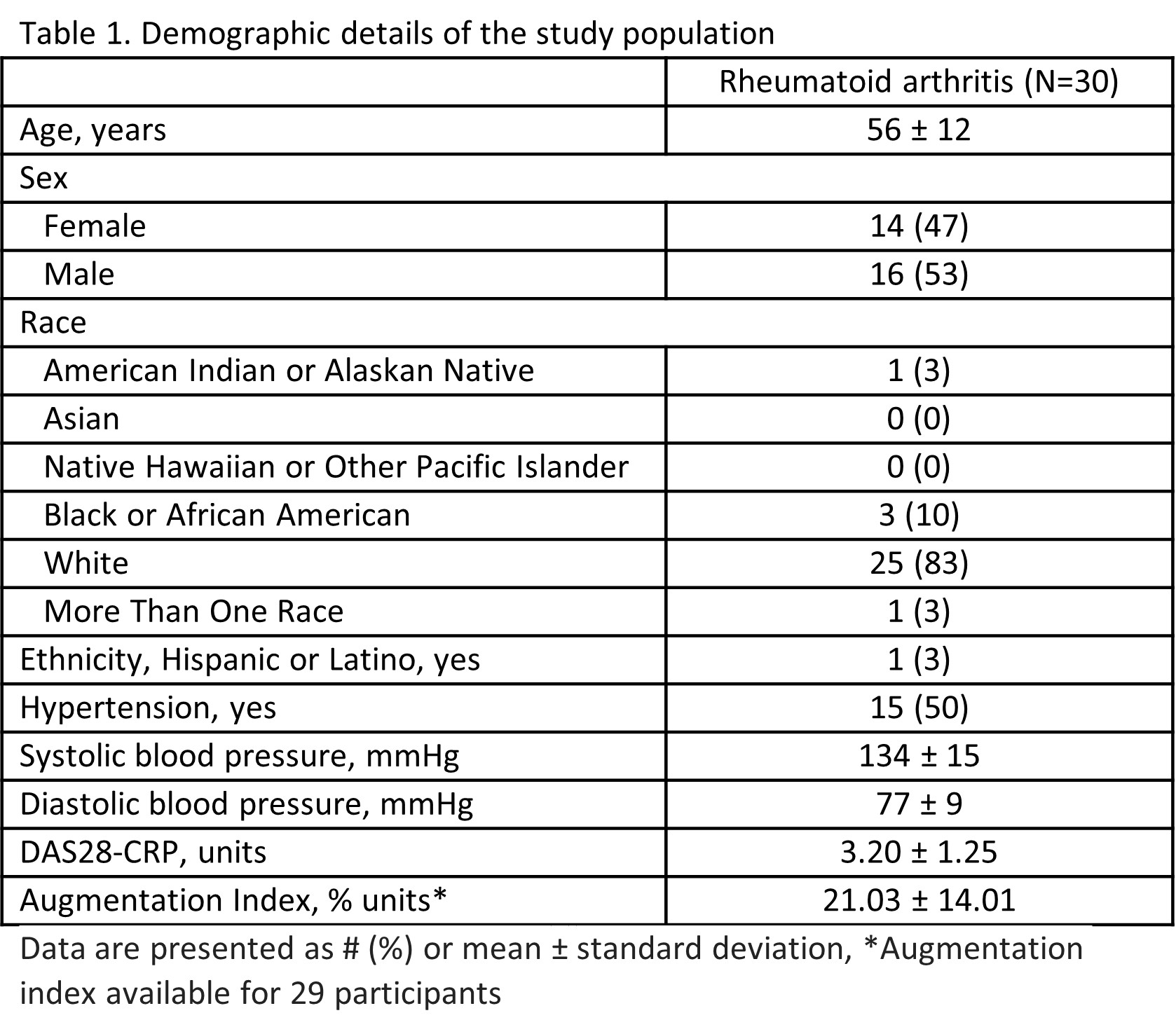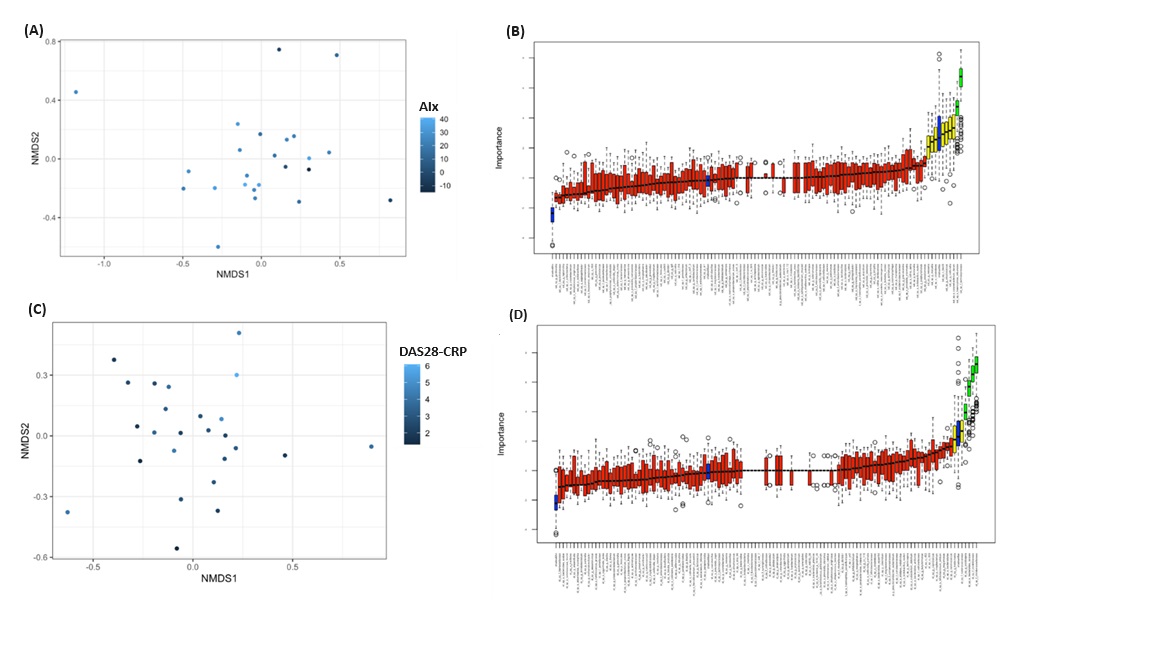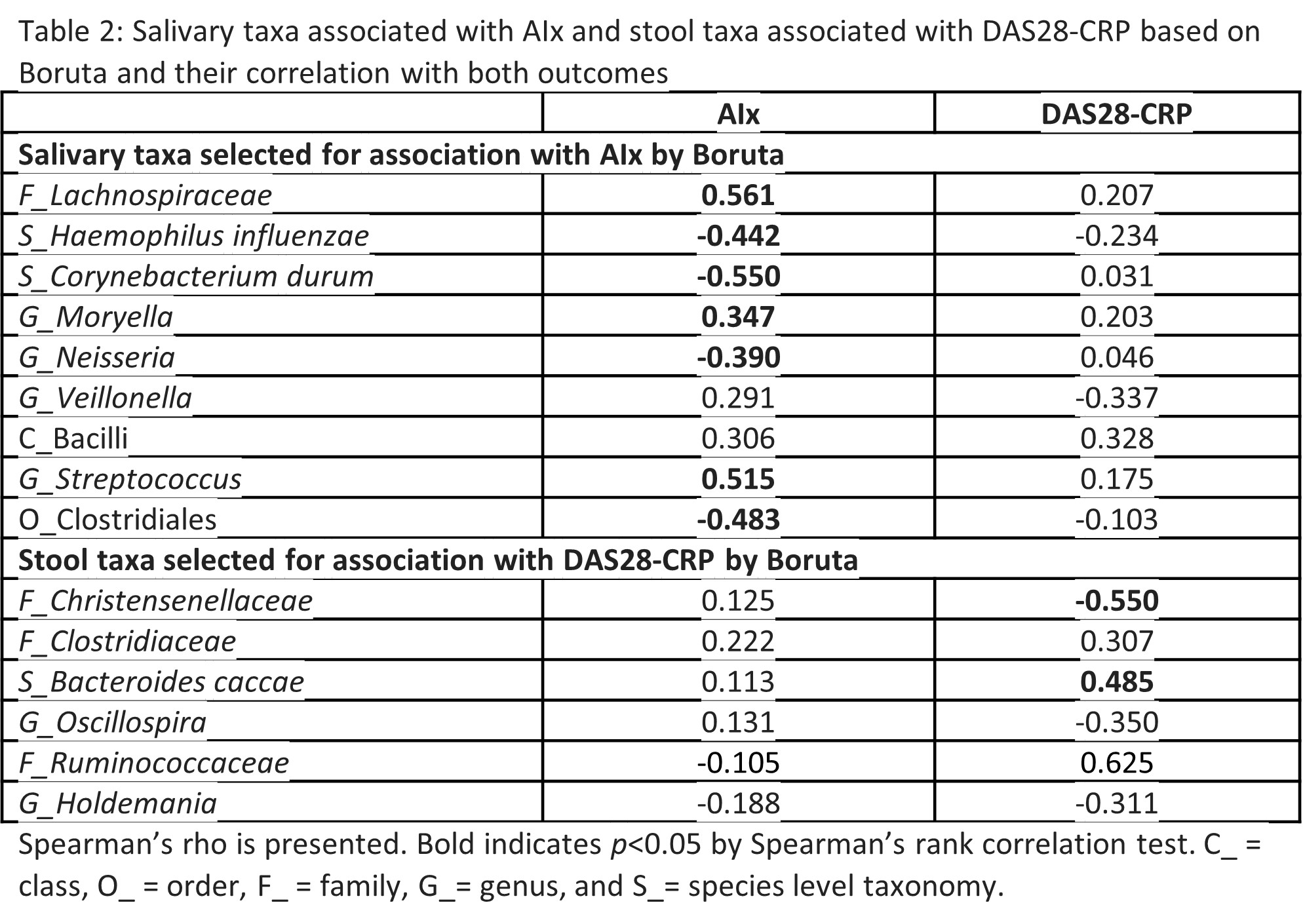Session Information
Session Type: Poster Session B
Session Time: 10:30AM-12:30PM
Background/Purpose: Rheumatoid arthritis (RA) is a systemic autoimmune disease affecting the joints that is associated with increased cardiovascular risk. Environmental factors play a crucial role in the development of RA, and potentially its associated cardiovascular disease. The goal of this study is to determine if the stool and salivary microbiome are associated with disease activity and vascular function in RA.
Methods: Patients with RA were recruited from the Nashville VA hospital and Vanderbilt University Medical Center. Disease activity was measured by DAS28-CRP. Vascular function was measured by augmentation index (AIx), which is a measure of arterial stiffness that is an independent predictor of cardiovascular events. The study participants collected stool and saliva for 16S rRNA microbiome analysis. Broad association of AIx and DAS28-CRP score with microbiome site was assessed by PERMANOVA. Random forest with Boruta was used to select taxa associated with AIx and DAS28-CRP. The directionality of association of these selected taxa with AIx and DAS28-CRP was assessed by Spearman’s rank correlation.
Results: The study included 30 patients with RA (Table 1). Salivary microbiome composition was associated with AIx (p = 0.019, PERMANOVA, Figure A); and salivary taxa (in order of importance) Lachnospiraceae, Haemophilus influenzae, Corynebacterium durum, Veillonella, Streptococcus, Bacilli, Clostridiales, Moryella, and Neisseria were associated with AIx based on Boruta (Figure B, Table 2). Stool microbiome composition was associated with DAS28-CRP (p = 0.027, PERMANOVA, Figure C); and stool taxa Christinellaceae, Clostridiaceae, Bacteroides caccae, Oscillospira, Ruminococcaceae, Holdermania were associated with DAS28-CRP based on Boruta (Figure D, Table 2). Spearman’s rank correlation between selected taxa and outcomes (AIx and DAS28-CRP) by site are provided in Table 2.
Conclusion: Salivary microbiome composition is associated with AIx, and stool microbiome composition is associated with disease activity in patients with RA. Relationship between microbiome composition and outcomes was heavily dependent on site. Furthermore, there were no common taxa reproducibly associated with both higher disease activity and AIx. Given these data, we believe that it is unlikely that particular microbe influences both disease activity and AIx in RA, but further studies are needed to delineate cause and effect relationships.
To cite this abstract in AMA style:
Joishy T, Chen S, Wu Q, Ormseth M. Relationship Between Salivary and Stool Microbiome with Disease Activity and Vascular Function in Patients with Rheumatoid Arthritis [abstract]. Arthritis Rheumatol. 2024; 76 (suppl 9). https://acrabstracts.org/abstract/relationship-between-salivary-and-stool-microbiome-with-disease-activity-and-vascular-function-in-patients-with-rheumatoid-arthritis/. Accessed .« Back to ACR Convergence 2024
ACR Meeting Abstracts - https://acrabstracts.org/abstract/relationship-between-salivary-and-stool-microbiome-with-disease-activity-and-vascular-function-in-patients-with-rheumatoid-arthritis/



